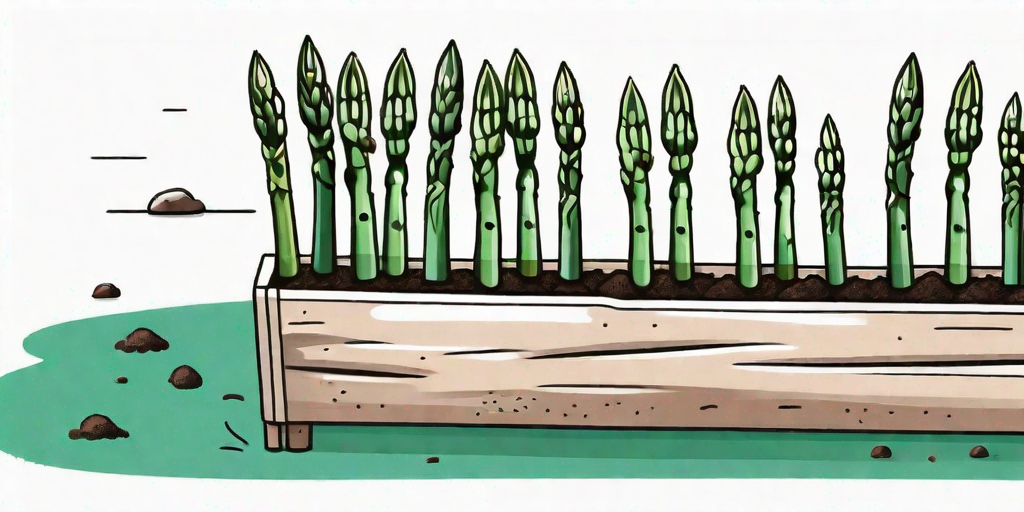
Welcome to the world of asparagus, where the spears are green, the flavor is divine, and the satisfaction of growing your own is unparalleled. If you've ever wondered how to turn a tiny asparagus seed into a bountiful harvest, you're in the right place. Let's embark on this exciting journey together, shall we?
Understanding Asparagus: The Long Game
Before we dive into the nitty-gritty of planting asparagus seeds, it's important to understand the nature of this vegetable. Asparagus is not your typical plant-it-and-forget-it crop. It's more like a long-term relationship - it requires patience, care, and a bit of love. But don't let that scare you off! The reward is well worth the wait.
Unlike other vegetables, asparagus takes a few years to produce a full harvest. But once it gets going, it can produce spears for up to 20 years. That's right, two decades of delicious, home-grown asparagus from a single planting. Now that's a return on investment!
Choosing the Right Asparagus Variety
Just like humans, asparagus comes in all shapes and sizes. There are several varieties to choose from, each with its own unique characteristics. The most common varieties are Mary Washington, Jersey Knight, and Purple Passion.
Mary Washington is a tried and true variety, known for its resistance to diseases and its hearty spears. Jersey Knight is a male hybrid that produces fewer seeds and more spears, making it a popular choice among gardeners. Purple Passion, as the name suggests, produces beautiful purple spears that are sweeter and more tender than other varieties.
Choosing the Right Variety for Your Climate
When choosing a variety, it's important to consider your local climate. Asparagus is a hardy plant that can withstand cold winters, but some varieties are better suited to certain climates than others. For example, Jersey Knight is more tolerant of warm climates, while Mary Washington is better suited to cooler climates.
It's also worth noting that asparagus prefers full sun, so choose a planting location that gets at least 6-8 hours of sunlight each day.
Planting Asparagus Seeds: The How-To
Now that we've covered the basics, let's get down to business. Here's a step-by-step guide on how to plant asparagus seeds.
- Start seeds indoors: Asparagus seeds should be started indoors in late winter or early spring. Plant the seeds in a seed-starting mix, about 1/2 inch deep. Keep the soil moist and warm (70-85 degrees F).
- Transplant seedlings: Once the seedlings have developed two sets of true leaves, they can be transplanted into individual pots. Continue to keep them indoors until the danger of frost has passed.
- Prepare the soil: Asparagus prefers well-drained soil with a pH between 6.5 and 7.5. Add compost or well-rotted manure to improve soil fertility.
- Plant the seedlings: Dig a trench about 12 inches deep and 12 inches wide. Space the seedlings about 18 inches apart in the trench. Cover the roots with 2 inches of soil, and gradually fill in the trench as the plants grow.
- Mulch and water: Mulch the bed to retain moisture and suppress weeds. Water regularly, especially during dry periods.
Caring for Your Asparagus
Once your asparagus is planted, it's all about maintenance. Here are some tips to keep your asparagus happy and healthy.
- Watering: Asparagus needs regular watering, especially during dry periods. However, avoid overwatering as this can lead to root rot.
- Weeding: Keep the asparagus bed free of weeds, which can compete with the asparagus for nutrients and water.
- Fertilizing: Apply a balanced fertilizer in the spring and fall to promote healthy growth.
- Harvesting: Resist the temptation to harvest the spears in the first couple of years. This allows the plant to establish a strong root system. From the third year onwards, you can start harvesting the spears when they are about 8 inches tall.
FAQs
Now, let's tackle some frequently asked questions about planting asparagus seeds.
- When is the best time to plant asparagus seeds?
- The best time to start asparagus seeds indoors is in late winter or early spring. The seedlings can then be transplanted outdoors after the danger of frost has passed.
- How long does it take for asparagus to grow from seed?
- Asparagus takes about three years to produce a full harvest from seed. However, you can start harvesting a few spears from the second year onwards.
- How many asparagus plants do I need?
- As a general rule, plan for about 10-15 asparagus plants per person in your household. This should provide a generous harvest during the asparagus season.
There you have it - a comprehensive guide to planting asparagus seeds. Remember, growing asparagus is a marathon, not a sprint. But with patience and care, you'll be rewarded with years of delicious spears. Happy planting!











